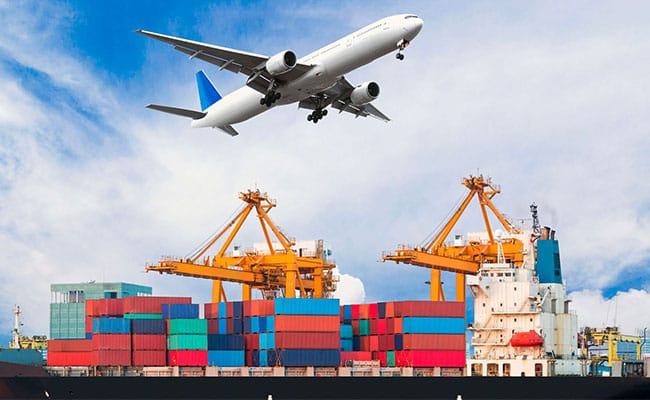With the deepening development of the Belt and Road Initiative, Central Asia is becoming a new hotbed for international trade. Kyrgyzstan, with its advantageous geographical location and membership in the Eurasian Economic Union, serves as a hub connecting Russia and Europe. Efficient logistics and transportation are crucial to its success. This article will provide a detailed overview of logistics between the two countries.

How to Ship from China to Kyrgyzstan
The China-Kyrgyzstan logistics corridor has evolved from traditional single-road transport to a multimodal network of road, rail, and air transport. Road transport is dominant, while rail transport is an emerging option. Air transport serves high-value-added goods. You can choose a different mode of transport based on the characteristics of your cargo:
Road Freight
Road transport offers flexibility, door-to-door service, and relatively fast turnaround times, making it suitable for small and medium-sized shipments. Transport using TIR carnets is becoming increasingly popular. Vehicles holding TIR carnets can be exempted from customs inspection when transiting through contracting countries by presenting customs seals, greatly improving transport efficiency and safety.
Rail Freight
Rail transport boasts high capacity, low costs, minimal weather impact, and high safety. Suitable for bulk cargo, heavy machinery, and less time-sensitive goods, but requiring a change of track or reloading through Kazakhstan due to the different track gauges.
Air Freight
Air freight is the fastest mode of transportation and is suitable for high-value or urgent goods. It offers high security and minimizes ground contact, but it is costly and has limited capacity at Kyrgyzstan’s domestic airports; transit is often required at major airports in Kazakhstan or Uzbekistan.
Products Suitable for Export to Kyrgyzstan
Kyrgyzstan imports a wide variety of goods from China, primarily including:
- Electrical and Mechanical Products: Home appliances (air conditioners, refrigerators, televisions), smartphones, laptops, lighting equipment, industrial machinery and accessories, etc.
- Light Industrial Textiles: Clothing, shoes and hats, home textiles, fabrics, etc. Chinese products, with their high cost-performance ratio, occupy a major market share.
- Building Materials and Hardware: With the development of Kyrgyzstan’s infrastructure, demand for steel, aluminum, glass, sanitary ware, lamps, hardware, and other materials is strong.
- Consumer Goods: Small commodities such as toys, stationery, kitchen supplies, and plastic products are very popular in local wholesale markets.
- Automobiles and Parts: The market share of Chinese-branded automobiles continues to increase annually, resulting in a correspondingly huge demand for auto parts.
Factors Affecting Shipping Costs from China to Kyrgyzstan
As a landlocked country, Kyrgyzstan receives most goods by road or rail from the Chinese border. Shipping costs are affected by a variety of factors:
Departure and Destination
Trucking fees to the border crossing vary significantly depending on the Chinese departure city. Different destination cities in Kyrgyzstan also affect the final leg of the shipping process.
Seasonal and Market Fluctuations
Demand surges around holidays (such as Chinese New Year and National Day), as well as customs or border policy changes that can lead to delays, can increase costs.
Cargo Types
Dangerous goods, fragile items, electronics, and goods with live batteries are considered special goods and carry higher prices.
Duties and Taxes
Import duties, taxes, and customs clearance fees can significantly increase total shipping costs.
Shipping Costs from China to Kyrgyzstan
As a landlocked country in Central Asia, it has become an important destination for many Chinese business activities. Cost is a top priority. The following are the details of the cost:
- Air freight: This is the most expensive option. Costs typically range from $4 to $8 per kilogram, depending on factors such as the volume and urgency of the shipment.
- Road freight: Routes are flexible, but costs vary widely. Expect to pay approximately $1,500 to $2,500 per truckload, depending on the distance and load.
- Rail freight: Rail freight offers a balance of cost and speed, making it an economical option for transporting heavy or bulky goods, depending on the type of cargo and the distance being traveled.
| Shipping Method | Cost Range | Key Factors |
|---|---|---|
| Air Freight | $4 – $8 per kg | Cargo volume, Urgency |
| Road Freight | $1,500 – $2,500 per truckload | Distance, Load |
| Rail Freight | $1,000 – $2,000 per TEU | Cargo type, Distance |

How to Save Costs Shipping from China to Kyrgyzstan
Saving shipping costs is crucial for businesses, especially in cross-border logistics. Proper cost control can significantly improve your profit margins. Here are a few ways to do this:
Choose the Right Shipping Method
Different shipping methods have different cost structures, so choosing the one that best suits your shipment and budget is crucial.
Optimize Packaging
Packaging directly impacts shipping costs. Proper packaging not only reduces potential damage during shipping but also maximizes space utilization, reducing shipping costs.
Choose the Right Freight Forwarder
Different logistics companies and their service terms can affect final costs. Choosing the right freight forwarder can significantly reduce shipping costs.
Schedule Your Shipment
Shipping costs can be affected by seasonal demand fluctuations. Avoiding peak shipping periods can significantly reduce shipping costs.
Streamline Customs Clearance
Before shipping, understand the destination country’s customs clearance requirements and ensure all documentation is complete to avoid additional costs due to customs clearance delays.
Documents Required for Exporting to Kyrgyzstan
- Commercial Invoice: This document must detail the shipper and consignee information, description of the goods, HS code, quantity, unit price, and total price.
- Packing List: This document must clearly state the contents of each package, along with the quantity, gross weight, net weight, and volume.
- Bill of Lading: For road transport, use a CMR waybill; for rail transport, use a rail waybill; and for sea transport, use a sea waybill.
- Certificate of Origin: A general certificate of origin (CO) issued by the China Council for the Promotion of International Trade (CCPIT) is typically required to qualify for tariff preferences.
- Customs Clearance Letter/Contract: This document authorizes the freight forwarder to perform customs clearance at domestic ports.
- Other Possible Documents: Depending on the product type, quality certificates, health permits, and EAC certifications may be required.
How to Choose the Right Freight Forwarder
Choosing the right freight forwarder is crucial to ensuring your cross-border shipments are smooth and efficient. Here are some key factors to consider when choosing a suitable freight forwarder:
Freight Forwarder Experience and Professionalism
Select a freight forwarder with years of experience. Experienced forwarders are often able to handle a variety of complex shipping issues.
Service Content and Flexibility
Can they provide full-service from origin to destination, including pickup, warehousing, customs clearance, transportation, and delivery
Pricing Transparency
Select a freight forwarder with transparent pricing and no hidden fees. Be sure to confirm all potential fees and terms before signing a contract.
Customs Clearance and Legal Compliance
Cross-border shipping involves complex customs and legal procedures. Choosing a freight forwarder with strong customs clearance capabilities can help you minimize delays and additional costs caused by customs clearance issues.
The logistics channel from China to Kyrgyzstan is becoming more and more mature and efficient. Through this article, you can deeply understand every link of this logistics chain and choose a trustworthy logistics partner to ensure the smooth arrival of goods.
